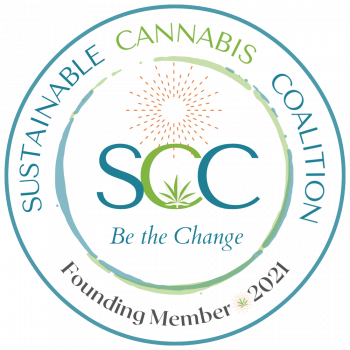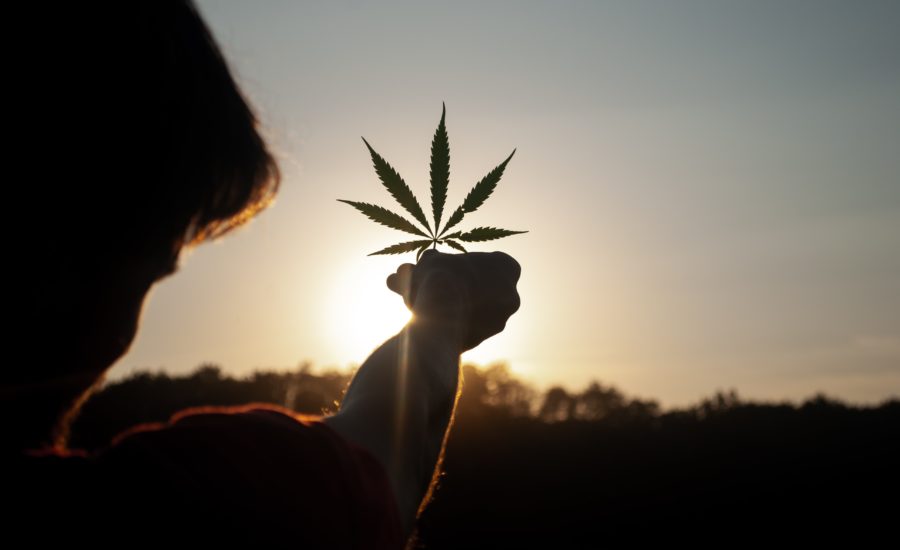When states like Colorado and Washington made history by voting to legalize adult-use cannabis back in 2012, it’s safe to say that environmental sustainability was not at the top of the priority list for state regulators. Even now, when more than half the states in the country have either a medical marijuana or adult-use cannabis market, most state regulatory agencies remain primarily concerned about matters of public safety and minimizing (if not eliminating) the impact and size of the illicit market.
Like with everything else we’ve seen resulting from the state-by-state legalization of cannabis, the industry has seen a patchwork of air, water, pesticide, and waste regulations that vary across dozens of states, making it especially challenging and financially burdensome for licensed cannabis operators to operate from a sustainability perspective.
Additionally, in most states, the cannabis regulatory agencies operate separately from the state environmental departments, which can result in operators being unaware and overlooking the necessary environmental permits until after licenses have already been obtained. For example, license applicants in Michigan may not be aware that receiving a license from the LARA-MRA doesn’t guarantee that their operation is in compliance with the environmental regulations enforced by the Michigan Department of Environment, Great Lakes, and Energy (EGLE).
Fortunately, as more and more states legalize cannabis, many state agencies have begun to realize the significant environmental impact of the legal industry, which have resulted in great part due to the regulations they’ve created. In an attempt to begin to mitigate and reduce the huge quantities of pesticides, energy, and water utilized by an industry that simultaneously generates literal tons of plant and packaging waste, state regulatory agencies are now seriously addressing the issues of sustainability in the cannabis industry.
The environmental impact of the cannabis industry is fairly all-encompassing; from water and energy usage to waste disposal (both plant and packaging).
Water Usage
It is estimated that a single cannabis plant requires six gallons of water per day for 150 days before being cultivated. While some of this water usage can be reduced by growing in a wetter outdoor climate, regulatory restrictions in some states (as well as their natural climate…ahem, Arizona) mean this is not a viable option for every cannabis business.
Runoff from both traditional agriculture and cannabis farming impacts the environment by carrying pesticides, heavy metals, excess and elevated nutrients, as well as other pollutants with it downstream. Mandatory indoor cultivation brings with it the potential for added pressure on municipal water systems from the discharge of excess nutrients and industrial cleaners, increasing the stresses on existing wastewater treatment facilities.
Stricter regulations around water usage are increasing in markets across the country. States like Michigan have adopted rules on issues like industrial wastewater, water resources, and land management for cannabis growers. In Oregon, growers must prove they have a legal source of water. Illinois growers must use automatic watering systems and limit the amount of runoff water they produce; they also have to collect and filter the wastewater so that it can also be used to water their plants in the future. To help protect state resources in California, regulators developed the Cannabis Cultivation Policy, outlining the requirements to help minimize the effects of cannabis cultivation on wildlife and waterways.
Energy Usage
According to a report released by New Frontier Data, by 2022 the electricity demand for cannabis cultivation in the U.S. alone will have increased 162% from its levels in 2017. Increased legalization and the subsequently increased market size have allowed for investment in technology and innovations delivering more energy-efficient practices, which will ultimately result in reduced greenhouse gas emissions associated with power generation. One of the greatest energy-saving innovations in recent years has been the introduction of full-spectrum LED lights to cannabis grows. In contrast to high-pressure sodium lights, which had been the industry norm for generations, LEDs run cooler and consume a fraction of the electricity.
As the industry continues to “green” itself, cannabis cultivators must also take into consideration new layers of regulatory requirements as they develop their facilities, and as they implement SOPs. For example, Massachusetts and Illinois have both adopted legislation that mandates cannabis facilities average 36 w/sq. ft. of lighting load over the canopy, and the Massachusetts code references the Design Lights Consortium’s (DLC) Qualified Products List for horticultural lighting fixtures.
The Massachusetts Cannabis Control Commission also now requires cultivators to include their PowerScore data in their license renewal applications in order to meet the state’s Global Warming Solutions Act.
Other states are also considering similarly aggressive energy codes, and usage rates for key resources like electricity are often mandated. In Illinois’ Cannabis Regulation and Tax Act, for example, the Conditional Adult Use Requirements dictate “a commitment to a technology standard for resource efficiency” and that “a cannabis cultivation facility commits to use resources efficiently, including energy and water.”
In Boulder, Colo., licensed cannabis facilities are required to report their energy use and offset their consumption through one of three ways: installing a renewable-energy facility, participating in a verified solar garden, or paying into the city’s Energy Impact Offset Fund.
Waste Disposal
As stated in a previous blog post, a significant portion of the waste generated from the industrial-scale cultivation and processing of cannabis are the organic plant waste, and the required single-use consumer packaging. Recent data estimates that 10,000 tons of packaging waste was generated by cannabis sales in the first year of legalization in Canada alone.
As significant as this waste production is, it is important to note that the environmental impacts from these waste streams are, in fact, similar to various other consumer packaged goods. The ultimate environmental impact is also the result of the inefficient and antiquated waste management models for all of society, i.e., excessive landfilling, flawed recycling infrastructure and weak end-markets for compost. *A personal note on flawed recycling; I live in Douglas County, Colo., and our local recycling provider just stopped accepting glass of any kind in our recycling bins. My parents live in Maricopa County, Ariz., and their recycling provider now only accepts wine bottle-type glass, and no longer recycles aluminum cans. It seems the two most traditional recycling items are now no longer recyclable (or, more likely, no longer profitable items to recycle).
The Colorado MED recently implemented new sustainability measures that give licensees options to work around the 50/50 plant waste disposal requirement (requiring that plant waste material be mixed with an equal amount of non-consumable product like cat litter or bleach to render them unusable). These new waste disposal options include things like on-site composting, anaerobic digestion, pyrolyzing into biochar and biomass gasification. Interestingly, the state also launched a pilot program to capture carbon dioxide from fermenting yeast at local breweries and reuse that CO2 to grow cannabis plants.
Packaging
Another way cannabis companies are hoping to become more sustainable is through changes to packaging requirements. While Colorado’s new regulations also allow dispensaries to take consumer cannabis packaging back for recycling; it is not just the sheer volume of packaging material required in the legal industry, it is also the type and thickness of material required to create child-resistant packaging.
In a recent interview, James Eichner, Co-Founder of Sana Packaging indicated that “from a regulatory standpoint, something as simple as everything having to be in child-resistant packaging creates this unique challenge for sustainability, because, in order to create a child-resistant locking mechanism, it typically requires greater wall thicknesses for the packaging around those locking mechanisms that, for instance, can make it really difficult to create a compostable cannabis packaging product.” Because of the wall thickness requirement, Sana’s hemp plastic packaging is currently not certified compostable, despite being made from all compostable inputs. Eichner says “the locking mechanism hinders the product from breaking down in the 90- to 180-day period that is required for an item to be certified compostable.”
And, it’s not just the child-resistant requirements; product labeling requirements also contribute to the need for excess packaging. For example, despite its small size, a single serving edible in Washington state still must include two state-mandated caution logos, various written warnings and information on the licensees and product…not to mention any branding information the producer might also want to include.
In Massachusetts, the wording on edibles labels must measure at least 1/16th of an inch, and include the patient’s name; the producer’s name, registration number, telephone, mailing address and website; the name of the product; the quantity of cannabis contained in the package; the amount of THC; a list of ingredients, including the cannabinoid profile; the date it was produced and its expiration date; plus seven other pieces of information. After that, each label also must include a 49-word warning statement, some of it in all caps.
As more states legalize cannabis (16 states are currently eyeing either medical marijuana or adult-use cannabis legalization in 2021), the industry risks setting a dangerous precedent for plastic use that, if not addressed, threatens to escalate to dangerous levels.
The potential federal legalization of cannabis is an amazing opportunity for environmentally sustainable practices to be adopted as the national industry standard from the outset. While regulations might eventually become more streamlined, it’s not likely that operators will ever face *less* regulation, especially as it relates to sustainability and environmental impact. Investing in sustainable practices and operational procedures now will only help set cannabis operators up for success in the long run.

